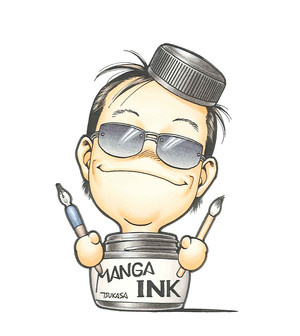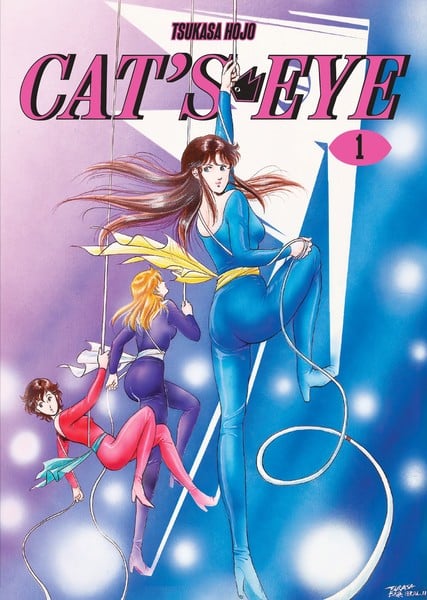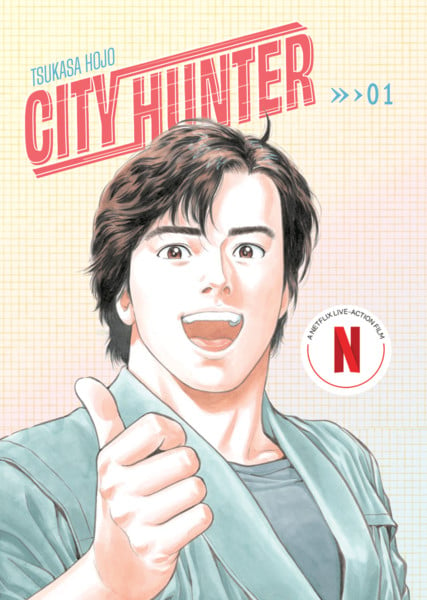Interview with Cat's Eye, City Hunter Manga Legend Tsukasa Hōjō
by Grant Jones,
City Hunter and Cat's Eye are both long-running and well-loved series both in Japan and around the world. What do you think contributed to their initial success back when they first began?
Tsukasa HŌJŌ: To be honest, as the person who drew the series, I'm not entirely sure why it has remained so loved. It doesn't feel real (laughs). However, both were series in shonen magazines, so there is no point in trying to sound sophisticated. I drew them content in the fact that they're manga meant for readers to simply enjoy—that they could find pleasure in as pieces of entertainment.
For Cat's Eye, there were many readers who enjoyed it more as a rom-com than any of the tales of thievery. The character relationships, the dynamic of almost revealing your true feelings but ultimately not, the mixed feelings of loving someone but hating them—these were all elements popular with the female fans.
In my next work, City Hunter, I made the protagonist Ryo Saeba a perverted character (mokkori man) so I was bracing for female fans turning away, but apparently there were actually more female fans than male ones. In fact, I remember the male fans telling me, “All the mokkori-ing is embarrassing, so please stop it” (laughs). I was constantly surprised by the reactions of my readers.
What do you feel are the essential elements of Cat's Eye and City Hunter stories?
HŌJŌ: At their core, there's always a stance that they are pieces of entertainment meant to be simply, straightforwardly enjoyed. Especially in Cat's Eye, where I had the intent of giving readers a “glimpse into adult romance” since “you would be adults one day too.” Since the series were in a shonen magazine, I drew them aimed at elementary schoolers, but I actually seemed to get the biggest reaction from middle and high schoolers.
In regards to City Hunter, I left all the fun action to the anime and movies and made a clear change of course in the manga, where I drew the series more as a story between man and woman with more emphasis placed on interpersonal relationships. That might have been the essence of the series in the end.
 ©1981 by TSUKASA HOJO / COAMIX |
 ©1985 by TSUKASA HOJO/COAMIX |
City Hunter and Cat's Eye have both been adapted many times over the years and into the modern day. What qualities do you feel help make it so adaptable?
HŌJŌ:I believe the biggest reason is that the kids who read the series at the time have grown up and are now in positions where they can create as creators. I believe there are still people out there who want to bring the series they used to read back in the day to life on screen with their own hands. Since they both had action scenes, I think it's possible to add more movement through animated visuals, and it lends itself well to music and sound effects.
For a modern audience who has never read either of these works, what do you hope they convey to these new readers?
HŌJŌ: The artstyle of our generation might come across as old-fashioned in contrast to modern anime and manga, and I'm more worried whether it will be accepted. Although I've heard some voices say that it's got a cool retro vibe (laughs).
However, since they were manga that I drew in the drive from my younger days, I hope you can sense that raw, passionate energy, and simply enjoy the series for what they are. Basically, “Please have an open mind.” (laughs).
What did you learn about your own creation process while making these works that informed your later series?
HŌJŌ: With so many works getting adapted into anime or dramas, I started wondering what elements weren't suited toward either medium—elements uniquely tied to manga. I decided to leave the action thrills to the anime and focus the manga more on interpersonal relationships.
That was also when I started exploring the limits of freedom in manga and that process led me to draw Family Compo [F. COMPO], thinking, “This would probably be hard to make into an anime or drama.”
Making a work on a weekly schedule can be challenging, making it difficult to reflect on work while it is being made. Have your feelings about City Hunter or Cat's Eye changed in the years since they have been published?
HŌJŌ: Looking back, I think that I was way too inexperienced back then. I get the impression that I was able to draw all of this because I had youth on my side, and I doubt that I could ever draw anything like them again now that my rationality is always getting in the way.
But I also think that was what made drawing those manga possible, so I now find them both nostalgic, all of the drive and energy from back then included. Even for the depictions of Ryo's “mokkoris,” I really pulled out all of the stops and thought, “Wow, I really did a good job” (laughs).
Characters from Cat's Eye and City Hunter have featured in crossovers alongside other titles such as Lupin III and Yawara!. Are there any other collaborations you would like to see in the future?
HŌJŌ: Most of the old collaborations came to be because they had the same anime production company or producers and outside of Lupin vs. Cat's Eye, I never had any direct involvement.
Honestly, I feel like it's hard to envision there being an anime or manga out today that would fit seamlessly with the physical proportions of my characters and the world they inhabit. But if I were to receive a passionate enough offer from someone and it resonated with me, then I would be open to considering it.
Cat's Eye and City Hunter are enjoyed by fans around the world. Has a fan ever shared something with you that stuck with you or surprised you?
HŌJŌ: For both manga, it's when I would receive comments like “Your manga saved me,” or “Reading this gave me the will to live.” I felt my spine straighten with solemn weight since I never thought that any manga I drew would ever save anyone and, while it comes across as an overstatement, it made me glad to be alive.
As far as anecdotes go, City Hunter (Ryo Saeba) received complaints from women's groups that the series was sexist. They apparently called up the editorial department, but my editor at the time told them, “No, this thing is popular with girls. Good day,” hung up on them, and they never called since. (Laughs). I'm still thankful for all the help I got from strong allies on my side like my editor.
Is there anything you wish to say to longtime fans of Cat's Eye and City Hunter before these new releases launch?
HŌJŌ: Many years have passed since these series started, and some may not see the point in releasing them now. Still, if there are people out there that have been waiting all this time, then I want to say from the bottom of my heart, “Thank you for being so patient.” And for new readers, I sincerely hope that you enjoy them with an open mind.
Thank you again for taking the time out of your day to answer these questions and for your incredible work over the years.
Tsukasa Hōjō's Cat's Eye and City Hunter manga are available now in English from Abrams Books.
discuss this in the forum (1 post) |